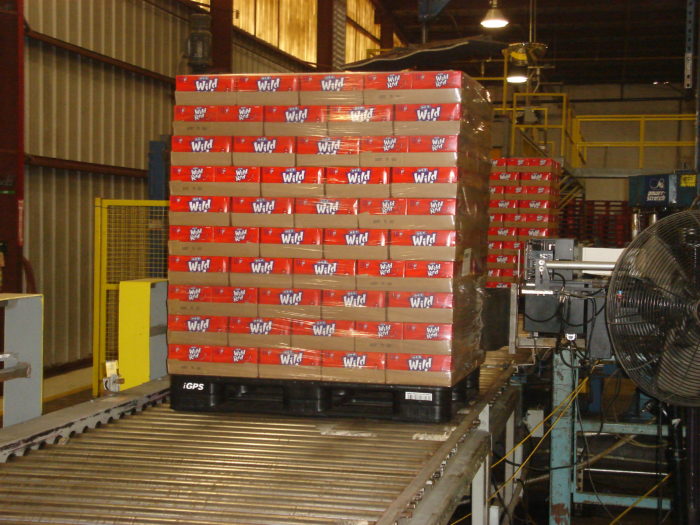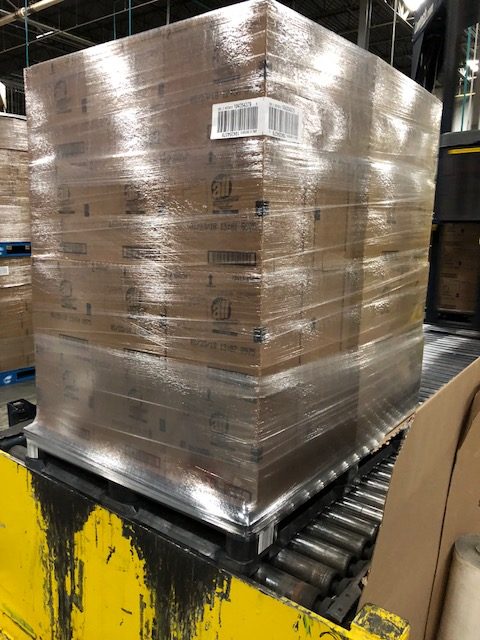Automation is often used as a byword for dystopia, utopia, and every vision of the future that falls in-between. In practice, however, it’s clear that automation improves the efficiency, productivity, and reliability of manufacturing and logistics. In a world where quick turnaround and even quicker fulfillment is considered the most important performance indicator in the supply chain, warehouse automation is an absolute necessity for companies that are trying to remain competitive.
However, warehouse automation isn’t a magic bullet that automatically launches a company to the cutting edge of the supply chain. It is a carefully thought out process that is implemented step by step and constantly refined over time. There are many difficulties involved in implementing warehouse automation, and an oversight can cause supply chain failures that may be extremely costly. Rising to the challenges of warehouse automation means being aware of potential problems in advance, planning ahead to minimize the risk of something going wrong, and being prepared with workarounds to manage issues that might arise.
Planning Is Key to Avoiding Automation Pitfalls
 One of the more common misconceptions about automation is that it has advanced to the point where it can easily and efficiently fill any role. While automated systems have been developed that can perform most of the tasks that a human can, the efficiency and reliability of these systems are highly variable. A common mistake manufacturers, retailers, and logistics firms make is assuming that there is already an off-the-shelf automated solution available for their needs.
One of the more common misconceptions about automation is that it has advanced to the point where it can easily and efficiently fill any role. While automated systems have been developed that can perform most of the tasks that a human can, the efficiency and reliability of these systems are highly variable. A common mistake manufacturers, retailers, and logistics firms make is assuming that there is already an off-the-shelf automated solution available for their needs.
Errors propagate more quickly with the faster pace of automated systems.
Even if such a solution exists–or is possible to develop–integrating it with existing automation or existing practices may be difficult. Retailer Asos suffered a loss of about $25 million in 2019 due to a failure by a new Automated Storage and Retrieval System (ASRS) to properly put away inventory, leaving products backlogged in receiving areas. Also in 2019, subscription fashion service Rent the Runway experienced a software glitch that failed to account for outgoing orders leaving the inventory, meaning that customers could potentially make orders the company could not fulfill. The result was a reputation-damaging freeze on new orders for several days.
When it comes to implementing automation, challenges like those listed above aren’t out of the ordinary. These types of issues can be mitigated through careful planning in the form of:
- Inventory Audits: Before, during, and after implementation of warehouse automation, existing inventories should be manually checked against the record kept by the Warehouse Management System (WMS) to ensure the accuracy of the automated system. Periodic audits are a routine part of warehouse management, automated or not. The speed of automation makes it even more vital that inventories are closely tracked, as errors will propagate more quickly with the faster pace of automated systems.
- Clear Reporting Policy: Audits and other procedures for the oversight of warehouse automation must be paired with a clear reporting chain that allows employees to make any errors known to managers who have the authority to take corrective action as soon as possible. Timely reporting offers an opportunity to remedy the issue before it becomes a more serious problem.
- Alternate Procedures: If an error is found in an automated system, then procedures should be ready in advance for monitoring the system during operation or taking over operations manually while the system is taken offline. Staff should be aware of these procedures and how to implement them.
- Contracting Experts: Maintaining automated systems requires skilled experts employed by the warehouse or contracted from a provider. The contracts of these employees should include a provision for troubleshooting errors and repairing damage, in order to ensure the system is able to go back into operation quickly.
These simple preventative measures can reduce the impact of common issues in warehouse automation. Another basic precaution involves removing unpredictable elements from the supply chain that could interfere with automated systems.
Anticipating the Mechanical Challenges of Warehouse Automation
Errors in warehouse computer systems can cause issues that propagate quickly. Mechanical issues with an automated system, however, can propagate equally quickly and may be even more difficult to resolve. For example, finding replacement parts for a custom-built ASRS in a timely manner likely won’t be easy. For this reason, preventing damage to the ASRS, palletizers, and other machines is perhaps the most constant challenge of warehouse automation. A frequent source of physical damage to an automated warehouse system are the wood shipping pallets that are standard throughout much of the supply chain.
Wood splinters can jam sensitive automated equipment in the same way that nails can.
Wood pallets introduce the following potential sources of damage to warehouse automation:
 Nails: Wood pallets are made up of wood boards attached to wood blocks or stringers with nails or screws. These nails can cause wear and tear on machinery, and indeed, on many automated conveyor belts, wear is clearly visible in the areas where nailheads contact the surface. Nails can also pull free of boards and become stuck in moving machinery where they can cause damage and jams.
Nails: Wood pallets are made up of wood boards attached to wood blocks or stringers with nails or screws. These nails can cause wear and tear on machinery, and indeed, on many automated conveyor belts, wear is clearly visible in the areas where nailheads contact the surface. Nails can also pull free of boards and become stuck in moving machinery where they can cause damage and jams.- Splinters: The unfinished wood used to make wood pallets begins to break down quickly, creating rough surfaces and splinters that can damage products and packaging. Once they come free of the pallet, splinters can jam sensitive automated equipment in the same way that nails can.
- Unreliable Weight: Wood pallets are porous and absorbent, meaning that their weight is highly variable. A wet wood block pallet may weigh as much as 75 or 80 pounds, and these heavier pallets can throw off machinery that was calibrated for the lesser weight of a dry wood pallet.
- Product Spills: Nails and splinters shed by wood pallets can puncture product packaging, potentially resulting in liquid spills that cause damage to the sensitive components of an automated system.
One way companies can prepare for the challenges of warehouse automation is to eliminate unreliable wood pallets. High-quality plastic pallets are much better suited for automation. Plastic pallets start off lighter than wood pallets–at less than 50 pounds–and remain at this weight when in use. The unified construction of plastic pallets means that no nails are necessary; this eliminates wear and tear on conveyor belts and the possibility of nails jamming automated equipment.
Meeting and overcoming the challenges of warehouse automation is often just a matter of ruling out the possibility of a worst-case scenario. One of the easiest ways to do this is through the use of strong, consistent and reliable plastic shipping platforms, which help companies make the most of their supply chain automation.
The iGPS plastic pallet provides a reliable shipping platform solution for companies implementing warehouse automation. Renting durable and recyclable iGPS plastic pallets facilitates automation by reducing the likelihood of product or equipment damage. To make the switch, give our team a call at 1-800-884-0225, email a specialist at switch@igps.net, or visit our contact page.



